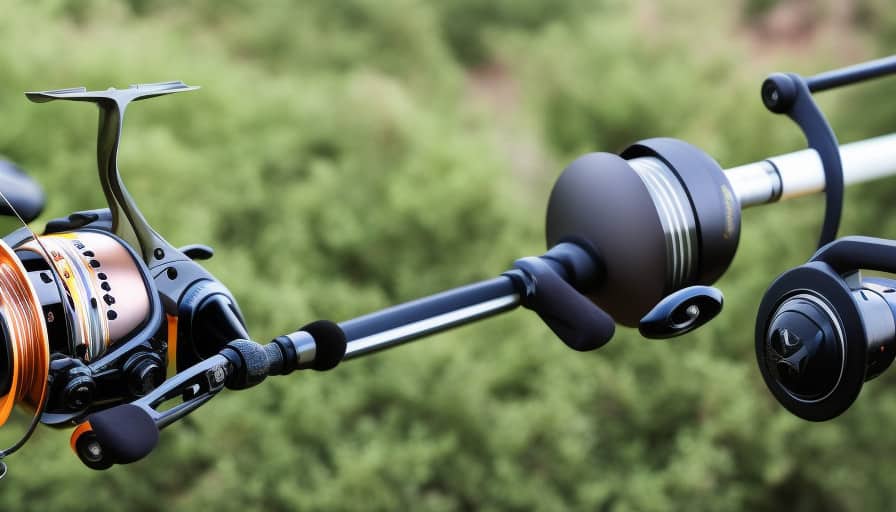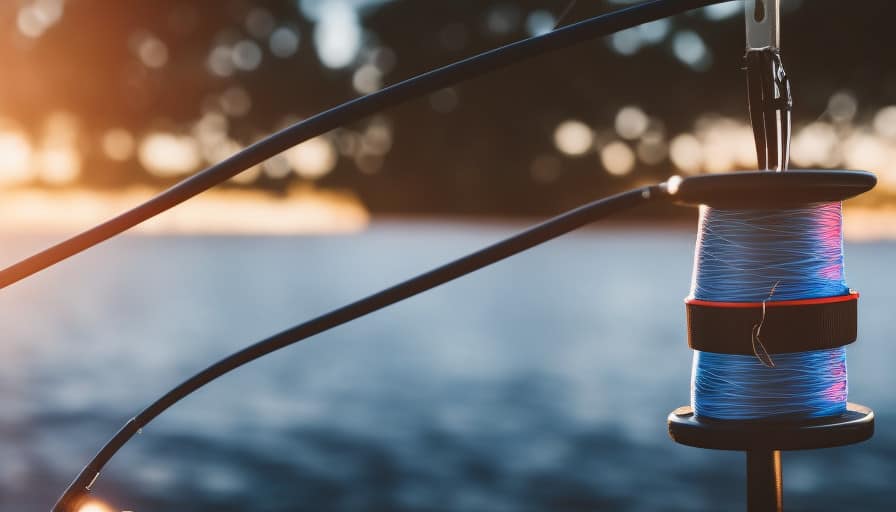According to recent statistics, fishing remains a popular recreational activity, attracting enthusiasts seeking mastery in the art of assembling fishing rods.
This article aims to provide detailed and informative instructions on how to put together a fishing pole. By adopting an objective and impersonal academic style, the content will focus on the following steps:
- Selecting the right components
- Preparing the fishing rod blank
- Attaching the reel seat and handle
- Installing the fishing guides
- Stringing the fishing line
- Conducting a thorough rod test.
Selecting the Right Fishing Rod Components
The process of selecting the appropriate components for a fishing rod involves considering factors such as rod length, power, action, and material. Choosing the right fishing reel is crucial, as it plays a significant role in the overall performance of the rod. The reel should be compatible with the rod’s specifications and the type of fishing it will be used for.
Understanding fishing rod actions and power is also essential in selecting the right components. Rod action refers to how much the rod bends when pressure is applied, and it can range from slow to fast. Fast action rods bend mostly at the tip, while slow action rods bend throughout the entire length. Power, on the other hand, refers to the rod’s ability to handle heavy loads. It is usually classified as light, medium, or heavy. Light power rods are more flexible and suitable for catching smaller fish, while heavy power rods are stiffer and designed for larger fish.
Lastly, the material of the rod should be considered, with options including graphite, fiberglass, or a combination of both. Each material offers different characteristics in terms of sensitivity, strength, and durability.
Preparing the Fishing Rod Blank
To prepare the fishing rod blank, one must first ensure that all the necessary components are readily available. The fishing rod blank is the main structural component of the fishing rod and serves as the foundation for the entire assembly.
Before assembling the fishing rod, it is important to inspect the blank for any signs of damage or wear. Any cracks, chips, or splinters should be repaired or the blank should be replaced altogether. Once the blank is deemed to be in good condition, attention can be turned towards selecting the right fishing line.
Fishing rod maintenance includes choosing the appropriate fishing line based on the type of fishing and the target species. Factors such as line weight, strength, and durability should be taken into consideration. Additionally, the type of fishing line, such as monofilament, fluorocarbon, or braided, should be chosen based on the fishing conditions and personal preference.
Attaching the Reel Seat and Handle
Attaching the reel seat and handle involves securing the components to the fishing rod blank in a manner that ensures stability and functionality. Properly attaching the reel is crucial for optimal performance and preventing damage to the rod. When attaching the reel, it is important to follow the manufacturer’s instructions and use the appropriate tools. This ensures that the reel is securely fastened to the reel seat, preventing any wobbling or shifting during casting or retrieving.
Choosing a comfortable handle is also essential for an enjoyable fishing experience. The handle should provide a secure grip and be ergonomically designed to reduce fatigue during prolonged use. There are various handle materials available, such as cork, EVA foam, or synthetic materials. Each material has its own advantages, and the choice ultimately depends on personal preference.
To attach the handle, it is necessary to slide it onto the rod blank and secure it in place using adhesive or thread wraps. Adhesive is commonly used for cork handles, while thread wraps are more common for synthetic materials. The wraps not only secure the handle but also provide additional stability and durability.
Installing the Fishing Guides
Installing the fishing guides involves positioning the components along the length of the rod blank in a precise and secure manner. Fishing guide materials typically include guides, guide wraps, and guide adhesive.
The guides are small metal rings that are attached to the rod blank at specific intervals. These rings serve to guide the fishing line along the length of the rod, reducing friction and allowing for smooth casting and reeling.
Guide wraps are threads that are used to secure the guides to the rod blank. They are wrapped tightly around the guides and rod blank, creating a secure bond. Guide adhesive is then applied to strengthen the wraps and ensure that the guides stay in place.
Troubleshooting guide installation may involve checking for proper alignment and spacing of the guides, as well as ensuring that the wraps and adhesive are applied correctly.
It is important to follow the manufacturer’s instructions and use the appropriate materials for installing the fishing guides to ensure a successful assembly of the fishing pole.
Stringing the Fishing Line and Testing the Rod
Stringing the fishing line and testing the rod involves several steps to ensure the rod’s functionality and performance meet the desired standards. This process is crucial for successfully assembling a fishing pole and preparing it for use.
To string the fishing line and test the rod effectively, the following steps should be followed:
-
Tying the fishing knot: Begin by tying a suitable fishing knot to secure the line to the reel. Different types of knots can be used, such as the improved clinch knot or the Palomar knot. It is important to ensure that the knot is tight and secure to prevent the line from slipping or breaking during use.
-
Adjusting the fishing reel: Once the line is securely attached to the reel, it is essential to adjust the reel’s settings. This includes adjusting the drag, which controls the amount of resistance the fish feels when pulling on the line, and adjusting the tension knob, which determines how freely the line comes off the spool.
-
Threading the line through the guides: Carefully thread the fishing line through the guides on the fishing rod. The guides are the small rings or loops that are attached along the length of the rod. Make sure the line passes through each guide smoothly and without any tangles or knots.
-
Testing the rod’s functionality: After stringing the line, it is necessary to test the rod’s functionality. This can be done by gently flexing the rod to ensure it has the appropriate amount of stiffness and flexibility. Additionally, test the rod’s balance and weight distribution, ensuring it feels comfortable and well-balanced in your hands.
-
Checking performance standards: Lastly, it is important to evaluate the rod’s performance against desired standards. This involves considering factors such as casting distance, sensitivity, and overall responsiveness. Make any necessary adjustments to achieve the desired performance.
Conclusion
Selecting the appropriate components for a fishing rod is crucial for successful fishing. Once the rod blank has been prepared, it is important to attach the reel seat and handle securely. The fishing guides should be carefully installed in the correct positions for optimal performance. Finally, stringing the fishing line and testing the rod is necessary to ensure its functionality.
As an interesting statistic, a study conducted by the American Sportfishing Association found that over 49 million Americans participate in recreational fishing each year. This highlights the popularity and importance of knowing how to assemble a fishing pole effectively.



Leave a Reply